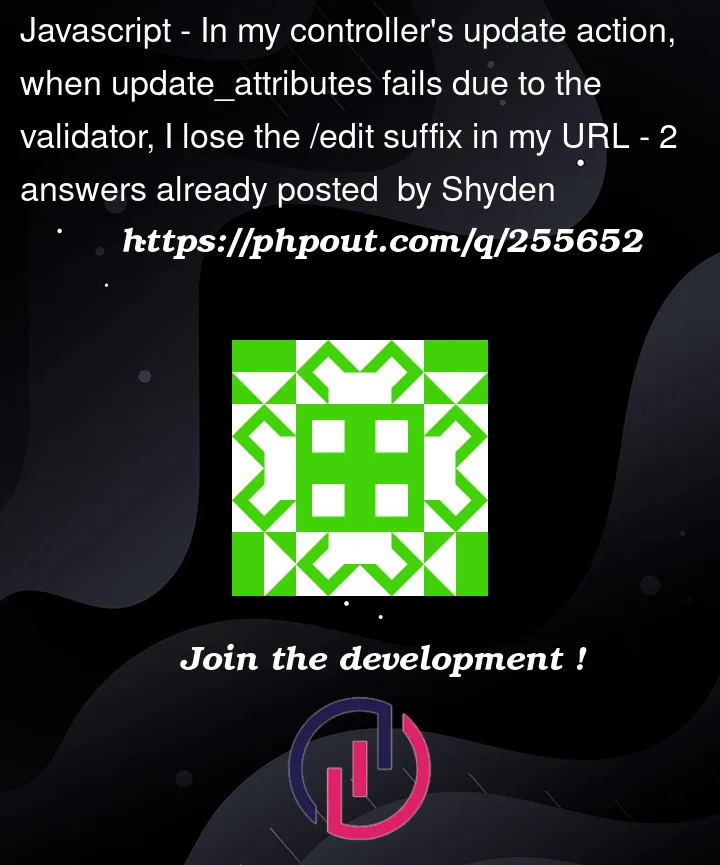Description of my work environment: Rails 4.2.4, Ruby 2.3.1, SQL Server database, javascript on object html views
My controller that content an update action:
if @cs.update_attributes(cs_params_update)
flash[:notice] = "Centro de Saúde #{t(:record_successfully_updated)}"
# format.html { render :action => 'edit', :cs_id => @cs.id }
# Permance na mesma página após o update
format.html { redirect_to({:controller => :cs, :action=>:edit,
:method => :get,
:cs_id => @cs.id
})}
format.xml { head :ok }
else
format.html { render({:controller => :cs, :action=> :edit }) }
format.xml { render :xml => @cs.errors, :status => :unprocessable_entity }
end
When I try to edit as follows http://localhost:3000/cs/1/edit and to save something that is going to call a validation erron on my controller’s update action,
the validator display error validation as expected but instead rendering it redirects to show url as follows http://localhost:3000/cs/1 loosing the /edit suffix
I had previously seen this problem in some stackoverflow questions ->
How to make a render :edit call show the /edit in the address bar
Why the URL loses the '/edit' suffix after a failed validation?
In my case, I need to use :render, as my cancel button is sending me to the show due to the url and I can’t go to the show, I need to stay in the edit after clicking the cancel button.
In my view I use javascript that allows you to enable and disable elements, follow the code present in my application.js:
function EnablDisablElements(FieldsNames, Status){
if (FieldsNames) {
for (var h = 0; h < FieldsNames.length; h++) {
document.getElementById(FieldsNames[h]).disabled = Status;
}
}
}




2
Answers
It’s behaving correctly. I think you’re confusing the
showurl with theupdateurl. They are the same, but they have different HTTP verbs. It’sGETforshowandPATCHfor update.When your validation fails, you are in the #update method in your controller, but b/c the validation fails you render the
editview. That’s what this code doesformat.html { render({:controller => :cs, :action=> :edit }) }. Actually you could just abbreviate that torender :edit.Everything is working the way it should!
You’re falling victim to a common beginner hangup in Rails. Your app is actually behaving correctly but you’re expecting the wrong result.
Lets say you have a resource named
products.In Rails the
GET /products/1/editaction simply renders a form. It’s an idempotent action.When you then submit the form you send
PATCH /products/1without the suffix. That’s because in REST you use the HTTP method to convey what’s happening. Not suffixes on the URL.When you then re-render the form with errors you’re displaying the result of performing a non-idempotent action. You’re responding to a form submission and that response is specific to just that request.
This is not the same thing as
GET /products/1/editand should not have the same URL.See: